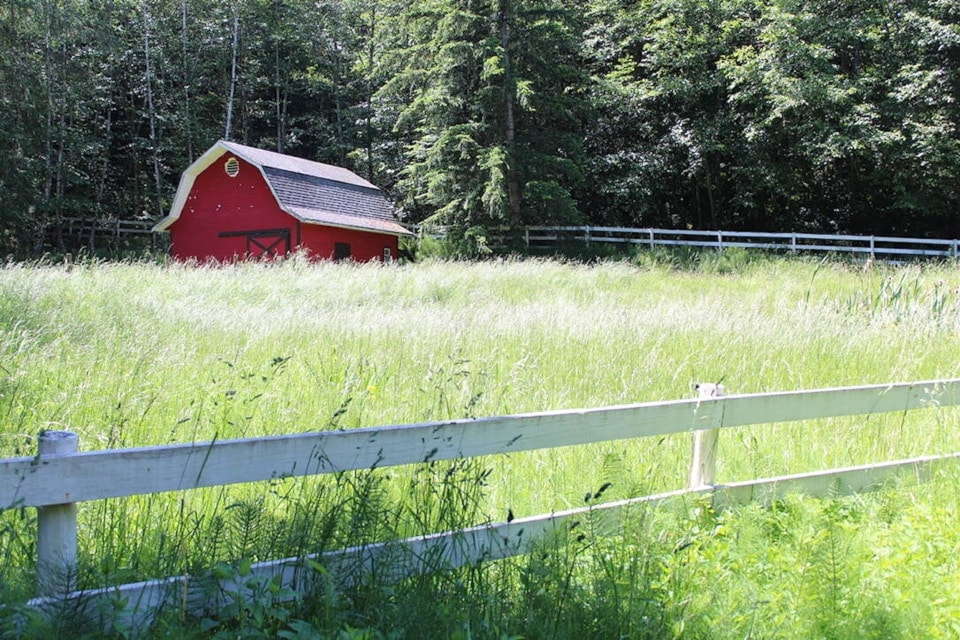Agricultural land across B.C. and in the Cowichan Valley is facing increasing pressures, and a land-use planner from the Ministry of Agriculture and Food is encouraging the Cowichan Valley Regional District to do what it can ensure the land continues to be used for growing food.
Reed Bailey made a presentation to the CVRD’s committee of the whole on the issue at its meeting on June 12.
He pointed out that farming is a significant part of B.C.’s economy, contributing $4.37 billion in 2021 and employing approximately 31,000 people, and the sector continues to grow.
“But it should come as no surprise that arable land in B.C. is very limited and is under a great deal of pressure,” Bailey said.“Just five per cent of the province’s land is in the Agricultural Land Reserve, and seven per cent of that is roads, bodies of water, rivers and perhaps some federal land, so they can’t be farmed even though they are in the ALR.”
Bailey said a bigger concern is that a large portion of the ALR is also Crown land, and there’s many competing uses for the land, including mining, forestry and recreation.
He said buying Crown land is fee simple, so starting a farm on Crown land these days is virtually impossible. Bailey also said the costs of all agricultural land continues to rise.
“The average cultivated farmland in B.C. increased by eight per cent in 2022, and that was preceded by an 18 per cent increase in 2021 and it’s currently $63,000 per acre on Vancouver Island, and that’s pricey,” he said.
“Increased demand and limited supply are contributing to these higher values.”
Bailey said farmland near urban areas, in particular, is seeing huge competition for uses like hobby farms, people wanting to live a rural-residential lifestyle and it's being bough as an investment opportunity.
He said urbanization is taking its toll on farmland, and the three areas with significant high growth in B.C. include the Lower Mainland, the Okanagon and southern Vancouver Island.
“From a farming perspective, this is a huge problem as this is also where 80 per cent of total farmer income in B.C. is generated, while it contains 77 per cent of the province’s population,” Bailey said. “More and more people are moving out of the cities and many are moving into tertiary markets like the CVRD. As a result, more people are looking at the ALR to solve the housing crisis. The ALR is not a solution to the crisis, nor is it the solution for local governments’ planning for housing.”
Bailey said another pressure on the ALR is the lack of industrial land in B.C. which has led to some extraordinary pricing for it, and people are looking to the ALR for industrial uses.
He suggested that local governments like the CVRD can help keep the ALR for agricultural purposes in a number of ways, including through the Local Government Act by creating agricultural area plans, as well as having more favourable tax and water rates for farms.
“It’s also important to adopt the ALR regulations and rules into local government bylaws,” Bailey said. “There are many uses local governments can’t prohibit, but they can regulate within their zoning bylaws. Local government officials do make a difference when supporting farmland and farmers.”
CVRD board chair Aaron Stone said the Ministry of Agriculture and Food has the tools to protect the ALR and asked Bailey why the province doesn’t legislate a framework of what they want to see for the ALR lands.
He said the province is putting continued pressure on local governments in all sorts of different ways, and it doesn’t seem like the government is hesitant to legislate and dictate what they feel local governments should be doing with any sort of land.
Bailey said that what the land-planning team team would like to see for ALR and for agriculture often differs from what the “greater ministry” actually wants to see. He said there are a lot of people who think the ALR should be being used for non-agricultural purposes.
“If I had a wish list, the ALR-use regulations would look a lot different than what they are now,” Bailey said. “But, unfortunately, our little land-use planning team often gets overruled and trumped by other aspects of our ministry, and by other ministries for that matter. What we want to see sometimes doesn’t mesh with what the province wants to see.”

